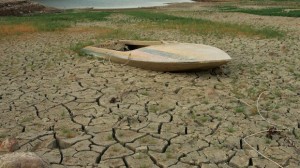Historic California Drought Highlights the Need for Water Technology and Conservation

For the past two years, California has been gripped in a historic drought, but things took a turn for the worse last month when measurements indicated 20% below normal precipitation levels and the worst drought conditions since record keeping began in the 1840’s. Governor Jerry Brown has declared a Statewide Drought Emergency and asked all 38 million California residents to reduce water use by 20%. Even President Obama has traveled to the state, offering Federal aid to those adversely affected by the drought. However, conservation may not be enough to ensure that there will be enough water in California to meet the demands of its population and industries in the long term. California produces a third of the country’s vegetables and agriculture accounts for 80% of the state’s water use. As California’s population continues to grow, and climate change threatens the state’s largest source of water, the annual snowpack on the Sierra Nevada, it falls to water technologies to help bridge the gap between water supply and demand. Much of California is arid and no stranger to water shortages. For that matter, California is no stranger to water technology either. Some of its largest cities reside in the driest part of the state and they survive by the widespread adoption of technologies, such as low-flow toilets and shower heads, which help people use water more efficiently. In fact, the use of reverse osmosis for desalination was pioneered in the 1950s at the University of California, Los Angeles. Membrane-based processes like reverse osmosis can be used to make salty ocean water into potable fresh water, or to recycle wastewater to be used again. Advances in technology and awareness of the need for conservation have helped bring per capita water use down even as California’s population continues to grow. To learn more about Governor Brown’s declaration of drought emergency, you can visit the governor’s website here. You can also visit Save Our Water for more information about the drought and water conservation tips.
- Most Viewed Blog Articles (5)
- Company News (285)
- Emerging Technologies (64)
- Microbiology and Life Science News (93)
- Water and Fluid Separation News (97)
- Filtration Resources (93)
- Product News (19)


![Join Sterlitech at BIO 2024 [Booth #5558]: Exploring the Future of Biotechnology](https://www.sterlitech.com/media/blog/cache/300x200/magefan_blog/b4.jpeg)



